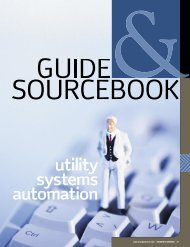FERC vs NERC: A grid control showdown over cyber security
FERC vs NERC: A grid control showdown over cyber security
FERC vs NERC: A grid control showdown over cyber security
Create successful ePaper yourself
Turn your PDF publications into a flip-book with our unique Google optimized e-Paper software.
4D<br />
WWW.INTELLIGENTUTILITY.COM /// JULY/AUGUST 2011<br />
42<br />
systems with the field-collected backbone is currently under way; this consolidation,<br />
together with completion of remaining feeders to be field collected, is<br />
scheduled and on target for completion by end of this year.<br />
In addition, Hydro One has nearly completed deployment of approximately<br />
1.2 million smart meters across the province. Each of these meters is also<br />
GPS-located, as are collectors and repeaters, and will be fully integrated into<br />
the distribution GIS in 2012.<br />
Driven by value<br />
While Hydro One has had a mature GIS for transmission<br />
assets for a number of years, until recently the expected<br />
return on the significant investment cost for distribution<br />
GIS was found to be less compelling. Hydro One is a valuedriven<br />
organization that continually reassesses the technology<br />
landscape to gain new efficiencies through innovation.<br />
With increased emphasis on the distribution business in line<br />
with smart <strong>grid</strong> initiatives, the strategic road map for GIS<br />
now comprises development of a spatially accurate distribution<br />
power system model and development of geospatially<br />
enabled enterprise asset management for distribution assets<br />
to form a core for emerging smart <strong>grid</strong> applications.<br />
In 2010, Hydro One initiated the Advanced Distribution<br />
System (ADS) project, an initiative in support of Ontario’s<br />
forward leading Green Energy Act. The ADS project builds<br />
on top of the successful smart meter deployment that is<br />
nearing completion, and seeks to implement a distribution<br />
management system and substation automation to enable<br />
the connection of distributed generation sources, including<br />
renewables. In 2010, business case development and RFP selection was undertaken,<br />
and Hydro One is currently engaged in<br />
designing and building the first project release.<br />
There has been a<br />
More data needed<br />
Many utilities are now finding that the data<br />
renaissance of field<br />
collected 20 years ago is not sufficient for smart<br />
<strong>grid</strong>, and there has been a renaissance of field collection to improve<br />
collection to improve the quality of geospatial assets<br />
represented in the GIS. Often, only basic attribution the quality of geoon<br />
assets deployed in the field has historically been<br />
collected—in some cases, only what was required spatial assets repre-<br />
to drive automated mapping and facilities management<br />
programs.<br />
sented in the GIS.<br />
GPS accuracy has also significantly improved with<br />
higher precision collectors at lower price points.<br />
Because Hydro One deferred its investment in distribution GIS, significant investment<br />
cost savings have been realized by only doing it once. In addition, evaluation<br />
of required data completed by the selected distribution management system<br />
(DMS) vendor found that “Hydro One’s initial data availability, accuracy (for DMS<br />
data model validation) and completeness is well above the industry average.”<br />
Populating distribution data<br />
DMS data will initially be populated by five key systems: network topology from<br />
the GIS, selected customer and load information, power system equipment<br />
characteristics, protection and <strong>control</strong><br />
settings, and connectivity to the transmission<br />
system. While each of these<br />
data elements is critical, accuracy of<br />
the power systems model represented<br />
in the GIS directly determines the ability<br />
of the DMS to produce accurate<br />
results from power utilization and<br />
power quality applications.<br />
To ensure data currency, completeness<br />
and accuracy, Hydro One is also<br />
completing as part of the ADS initiative<br />
an assessment of distribution data<br />
change <strong>control</strong> processes to ensure<br />
that all data sources are maintained,<br />
and updated proactively according to<br />
business triggers rather than reactively<br />
when problems occur. These recommendations<br />
will lead ultimately to<br />
implementation to protect Hydro<br />
One’s significant investment in source<br />
data for the DMS.<br />
Hydro One’s investment in geospatial<br />
technology directly supports<br />
and is a key dependency for the success<br />
of the ADS project as well as a<br />
number of other strategic initiatives.<br />
The approach currently being taken<br />
to perform full field inventory, to<br />
consolidate legacy tacti-<br />
cal GIS systems, and to<br />
formalize and optimize<br />
distribution data change<br />
<strong>control</strong> policies and<br />
procedures will ultimately<br />
support Hydro<br />
One’s strategic goals as<br />
a geospatially enabled<br />
intelligent utility.<br />
Nargis Ladha is manager<br />
of geospatial systems<br />
and technology projects<br />
at Hydro One, and is<br />
responsible for setting strategic direction<br />
for GIS and coordinating corporatewise<br />
initiatives.<br />
Erik Shepard, of Waterbridge Consulting,<br />
is supporting Hydro One’s Advanced<br />
Distribution System (ADS) project as the<br />
project lead for the GIS data consolidation<br />
project and as the lead for the DMS Data<br />
Change Control workstream within the<br />
ADS project.


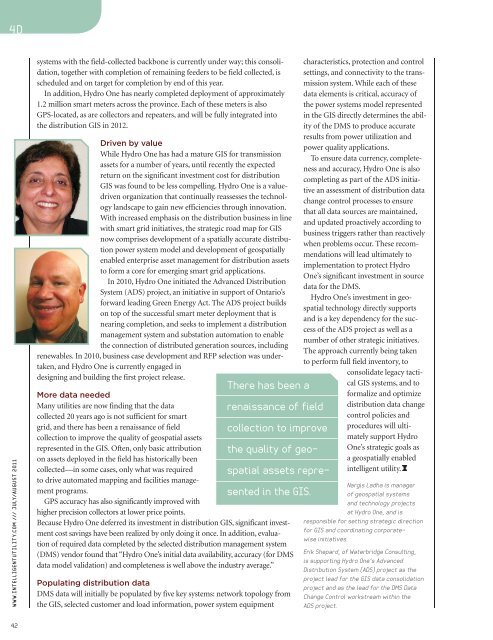
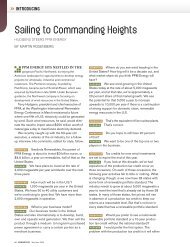
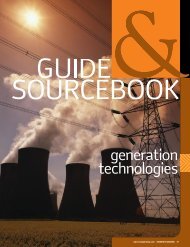
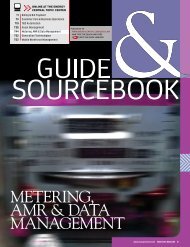









![View From the Trenches [PDF]](https://img.yumpu.com/18854438/1/190x252/view-from-the-trenches-pdf.jpg?quality=85)
